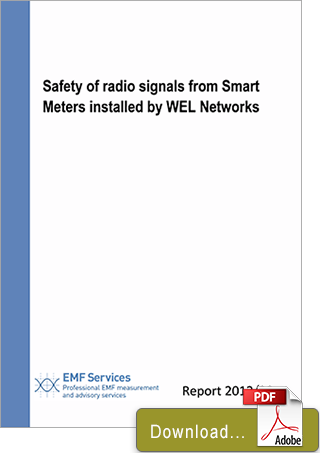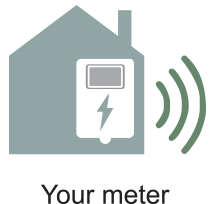 A study into the potential health effects of radio frequency emissions from advanced meters
A study into the potential health effects of radio frequency emissions from advanced meters
About EMF Services and the author of this report
EMF Services is a division of Monitoring and Advisory Services NZ Ltd (MAASNZ), and provides professional measurement and advisory services related to possible health effects of electromagnetic fields (EMFs), such as the extremely low frequency (ELF) electric and magnetic fields found around any wiring, appliances or infrastructure carrying mains electricity, and the radiofrequency (RF) fields produced by radio transmitters and some industrial equipment.
Martin Gledhill has an MA degree in Natural Sciences (Physics) from Cambridge University and an MSc in Medical Physics from the University of Otago. He is a member of the Australasian Radiation Protection Society and of the Bioelectromagnetics Society. Before forming MAASNZ he was head of the non-ionising radiation section at the National Radiation Laboratory of the New Zealand Ministry of Health. In this position he provided advice to central and local government, the public and industry on the health effects of EMFs, and carried out measurement and assessment services in this area. This work included providing policy advice to the Ministries of Health and the Environment, preparation of public information material, presenting expert evidence at local authority and Environment Court hearings, and assessing exposures to EMFs by both measurements and calculations.
Introduction and summary
This report discusses the safety of the radio signals transmitted by advanced meters being installed in the Hamilton area by WEL Networks.
Advanced meters send information about electricity consumption back to the supplier through a radio link. The model of advanced meter being introduced by WEL Networks uses a radio communications card which operates at relatively low power, and only transmits for a very short time each day.
Measurements made at a typical WEL Networks advanced meter installation, with the meter mounted in a metal box on an external wall showed that:
- Exposures to the radio signal behind the meter (on the inside of the wall), averaged over 30 seconds, were almost always less than 0.0005% of the limit allowed for the public in the New Zealand radiofrequency (RF) field exposure Standard1.
- The maximum 30 second average exposure was less than 0.003% of the public limit.
- On average, the meter transmits for one minute 22 seconds over the day.
Exposures in front of the meter (in a typical installation) were greater than behind it, but still well below the limits in the Standard. 30 cm from the front of the meter, time averaged exposures would still be less than 0.39% of the limit. Even if the advanced meter were to transmit continuously, exposures would still comply with the limits.
These measurements are described in more detail in EMF Services Report 2012/36 Measurements of radiofrequency fields from a WEL Networks advanced meter, available from WEL Networks.
The exposure results obtained on the WEL Networks meter are consistent with those obtained on meters in Australia and the USA which use the same radio communications card.
The limits in the New Zealand exposure Standard follow international recommendations, and are based on careful examination of research into possible health effects of RF fields. A wide range of possible health effects has been investigated. Overall there is no persuasive evidence of health risks from exposures which comply with the recommended limits. Recent reviews by several national and international health organisations confirm these conclusions.
On this basis, exposures to the radio signals from WEL Networks advanced meters do not pose any health risks.
More detailed information is contained in the rest of this report.
- EMF Services, Professional EMF measurement and advisory services report 2012/36



 Mk10D
Mk10D